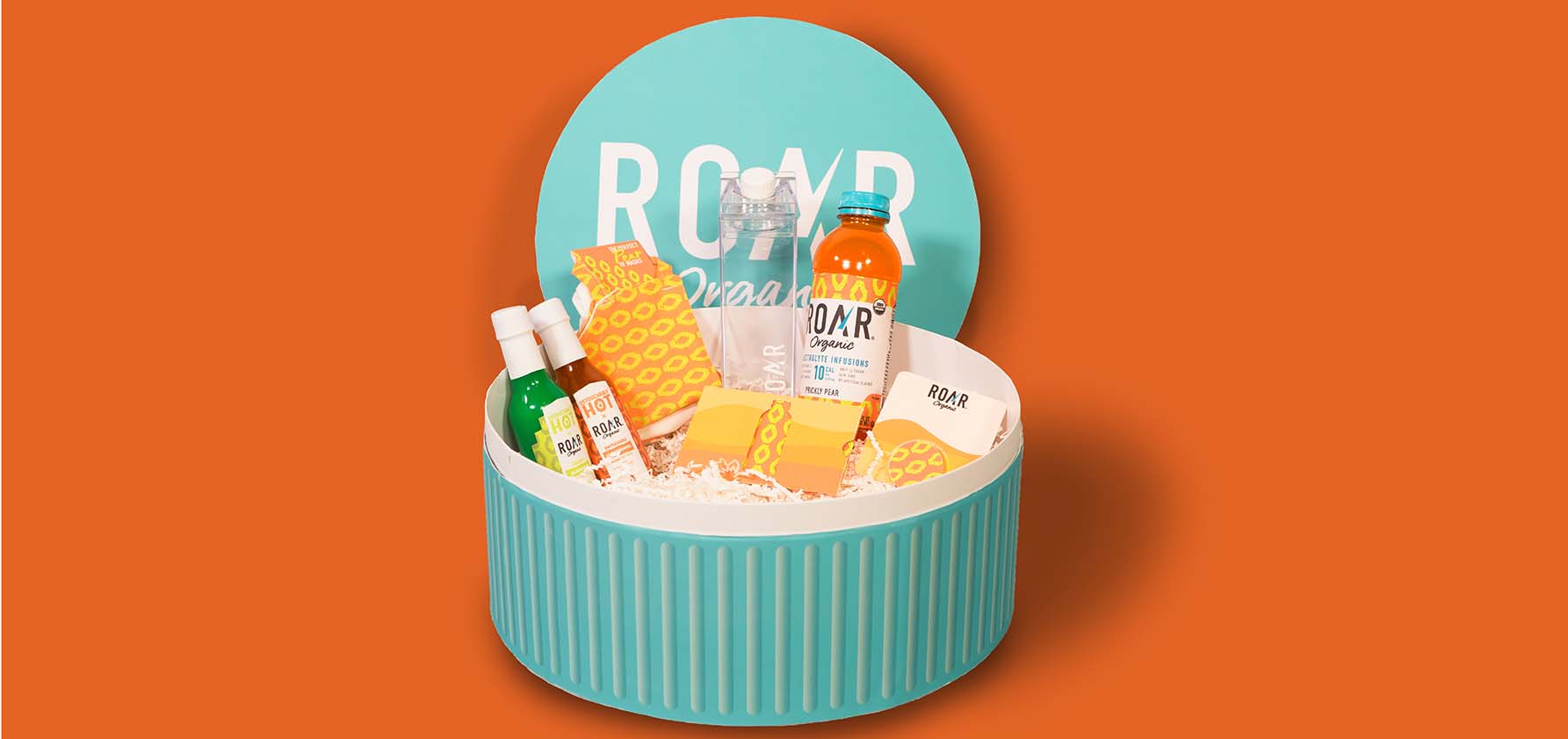
By Meghan Decker Szvetecz ’08
With internship programs on hold and companies working remotely, the opportunity for students to take part in real-world, hands-on projects is more valuable than ever. That’s why senior graphic and interactive design majors gained so much from the challenge to create, pitch, and develop a real consumer product last fall in Camille Murphy’s Graphic and Interactive Design Practice course.

Competing in pairs, the students in Murphy’s class were charged with the task of presenting a new drink design for ROAR Organics beverage, a client of The Factory, a Southside-Bethlehem-based investment company.
The idea for the competition came from Murphy’s past experience forming a co-lab with NBC Universal when she taught at Parsons, The New School in New York City. She says that experience influenced her deliberate shift away from the old way of having design students develop fictional products to having students work on design for actual commodities. Last year she launched this new initiative through a collaboration with the design team at Crayola.
Murphy says that she runs her class like a real design agency, providing students with client briefs, market research assignments, professional pitch meetings over Zoom, and plenty of virtual breakout room meetings between herself and the students, as well as The Factory design team and the students.
“My goals in setting up the project with The Factory were to show students that the best ideas win, to teach entrepreneurship, to teach the ability to pitch your ideas, to show students it’s important that you have a good idea, but it’s also important to learn how to sell your idea and listen to your client,” explains Murphy, who abides by these rules herself as a working freelance art director and designer.

Students set up Slack project management software to keep on track and collaborate with each other. They learned how to create a presentation deck with slides and designed a social media campaign and a media kit to send to influencers and editors to promote their new drink flavor.
“The Factory even provided the real packaging guidelines, and I was able to show my students how to set up a packaging file,” Murphy says. Additionally, in Portfolio, another course taken at the same time, each student creates a portfolio website to showcase their work and get them ready to enter the job market.
Another exciting aspect of the project was the chance for students to work with Factory designers and alumnae Liz Mogollan ’20 and Kristin Bertholf ’19, who judged the competition and mentored students along with art director John Stetz.
The winning team—Trey Adams ’21 and Skylar Vaughan ’21 (pictured above)—said they learned so much from working with recent graduates. “Kristin and Liz taught me a lot about thinking critically about my work, expectations in the professional design field, and about design in the food industry and marketing food products,” Adams says. “From Liz and Kristin, I learned how to present my work in a professional manner, and they gave me some tips and tricks about working with food product design,” adds Vaughan.

Adams and Vaughan won the competition with their Prickly Pear flavor, learning the value of going above and beyond client expectations and project guidelines. To market their southwest-themed beverage, the pair not only designed but physically crafted the media kit container (resembling an oversized ROAR bottle cap) and promotional items such as Prickly Pear hot sauce and logo face masks. They learned how to make VR-Filters and even created a Zoom background featuring the label’s artwork.
“We went beyond the project guidelines by creating the physical media kit items, a TikTok promotion, video posts for Instagram, and a working Snapchat filter with face tracking,” says Adams, who also used his photography skills to make images for their pitch presentation and social media posts.
Accomplishing all of this virtually was a challenge, Adams says, especially when creating physical products, “but with organization and a division of labor, you can achieve a successful result.” Vaughan says that they allowed each other to work from their strengths. And while collaborating via Zoom “took some getting used to,” the challenge was made easier by knowing each other so well. “Trey and I have been able to work together over the past four years at Moravian, as we have had almost every class together,” says Vaughan.
Plans are currently underway for Adams and Vaughan to visit The Factory for a tour and to see their proposal get prototyped.
Learn more about graphic and interactive design at Moravian College at moravian.edu/art.